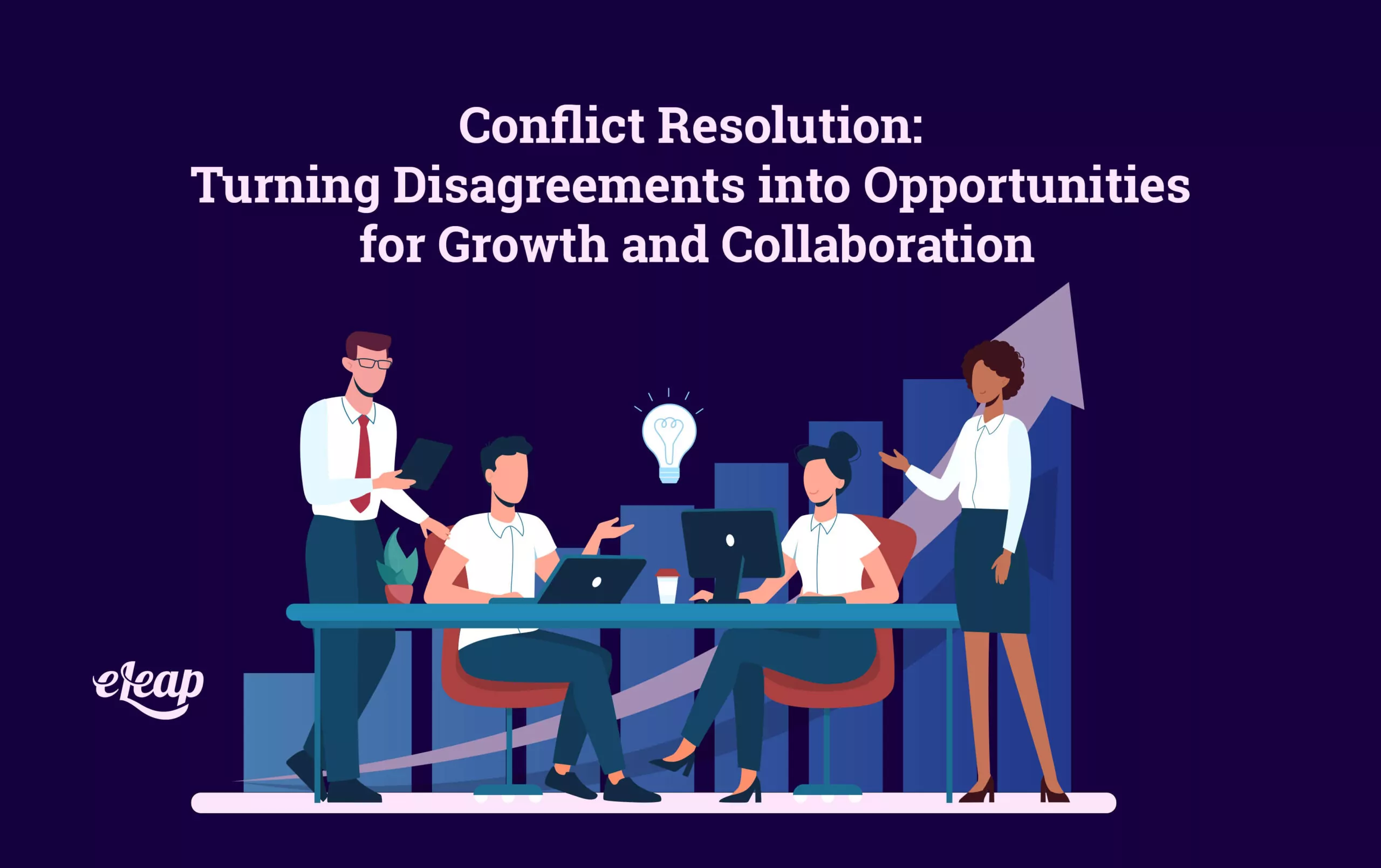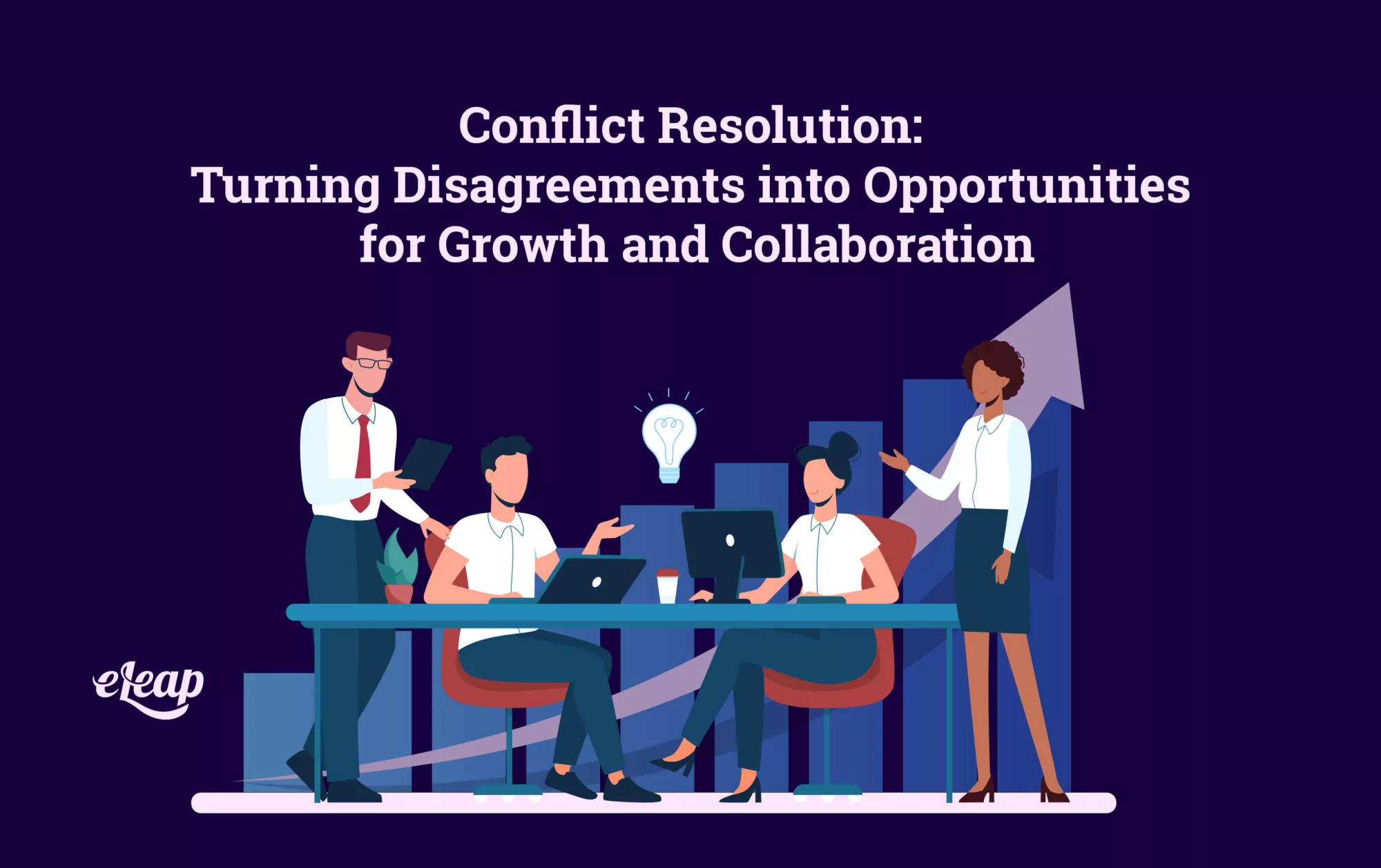Conflict Resolution: Turning Disagreements into Opportunities for Growth and Collaboration

In the high-stakes theater of modern organizational settings, disagreements and conflicts are as ubiquitous as board meetings and coffee breaks. Despite this, the conventional perspective often paints conflict as a destructive force, an enemy to productivity, and a hurdle to harmony. However, a more progressive understanding of conflict, backed by psychological research and successful industry practices, encourages us to view it differently: not as an inevitable obstacle but as a potent catalyst for growth and collaboration.

This transformational approach demands a shift in mindset. Rather than trying to eliminate conflict, an unrealistic goal due to our natural individual differences, we should focus our efforts differently. Our aim should be to manage conflict effectively. Done right, conflict resolution can open avenues for innovation, improve interpersonal relationships, and foster a culture of collaboration that benefits everyone involved.
In this in-depth exploration, we will delve into the nature of conflict in the workplace, the psychology of transforming conflict into opportunity, and practical conflict resolution techniques that promote growth and collaboration. By shedding light on real-world examples from industry leaders like Google and Bridgewater Associates, we will see how these concepts are applied to cultivate successful, innovative environments.
Embrace this journey to reinterpret conflict, not as a bug in our collective system but as a feature that can be harnessed for collective growth and collaboration.
Understanding Conflict in the Workplace
In a workplace, conflicts are an inevitable by-product of human interaction. They can arise due to a variety of factors, including:
Diversity of Perspectives
Employees come from diverse backgrounds and possess a wide range of perspectives in any workplace. This diversity is, undeniably, a strength that fosters creativity and innovation. However, it can also lead to different viewpoints and values clashing, causing conflicts.
Resource Allocation
Competition over limited resources can often lead to disagreements. These resources could be tangible (like funding for different projects or departments) or intangible (like time or attention from leadership).
Miscommunication or Misunderstandings
The way people interpret information or actions may vary significantly. Miscommunication or misunderstandings can occur, leading to disagreements and conflict. A clear understanding of the role of communication in resolving and managing conflict is crucial.
Interpersonal Relationships
Conflicts may arise from personal friction between colleagues. These could be due to personality clashes, different work styles, or varying personal values.
Recognizing these sources of conflict can help leaders and team members anticipate and address potential issues proactively.
Here’s a critical perspective to consider: conflicts are not intrinsically detrimental. In fact, they can act as accelerants for organizational transformation and individual growth.
An analysis by Pollack Peace Building Systems offers some eye-opening statistics. It reveals that American employees dedicate around 2.8 hours weekly to addressing conflict. When translated nationally, this equates to nearly $359 billion in compensated hours. These startling and significant figures accentuate the necessity of proficient conflict management in the workplace.
However, when handled properly, conflicts can lead to positive outcomes. They can highlight underlying issues that need to be addressed, stimulate constructive debate, and encourage a variety of viewpoints. They can also promote an environment of open communication and mutual respect, contributing to a more engaged and productive workforce.
The Transformation: From Conflict to Opportunity
The key to turning conflict into opportunity lies in our perspective. When we view disagreements as potential catalysts for innovation, relationship building, and team collaboration, we open the door to constructive resolution and personal growth.
Renowned psychologist Carol Dweck’s work on “growth mindset”, adds weight to this approach. According to Dweck, individuals with a growth mindset believe that their talents and abilities can be developed through hard work, smart strategies, and input from others, as opposed to a “fixed mindset,” where individuals believe their abilities are static and unchangeable. When applied to conflict resolution, this mindset encourages individuals to see disagreements not as impassable roadblocks but as opportunities for personal and collective growth.
Conflict Resolution Techniques
Effective conflict resolution involves various strategies, but we will focus on three standout techniques: win-win negotiation, active listening, and seeking first to understand.
Win-win negotiation
This strategy is rooted in the principles of “principled negotiation” or “negotiation of merits,” promoted by the Harvard Negotiation Project. It focuses on seeking mutual gains, adhering to fair standards, and maintaining relationships. By aiming for outcomes that benefit all parties involved, this approach turns conflict into an opportunity for collaboration and mutual growth.
In practice, win-win negotiation involves:
- Identifying shared interests: The basis for cooperation and finding common ground.
- Separating people from the problem: Focus on the issue, not the personalities involved.
- Exploring multiple options: Generate a variety of possibilities before deciding what to do.
Active listening
Active listening goes beyond merely hearing the words spoken by the other party. It requires fully concentrating on the speaker, understanding their message, responding thoughtfully, and then remembering what has been said.
Stephen Covey, in his best-selling book “The 7 Habits of Highly Effective People,” remarks, “Most people do not listen with the intent to understand; they listen with the intent to reply.” Active listening turns this on its head, aiming first for comprehension before formulating a response.
Seeking first to understand
This strategy, another gem from Covey, suggests a paradigm shift from our instinct to be understood first. By understanding the other person’s perspective before expressing our own, we can drastically reduce misunderstandings and build an environment of collaboration and mutual respect.
From Disagreements to Growth and Collaboration: Practical Examples
Several industry giants have successfully used these techniques to turn disagreements into opportunities.
Consider Google. The tech behemoth is famous for its culture of “constructive confrontation,” where ideas, not individuals, are debated vigorously. Employees are encouraged to voice their opinions, which are tested and challenged in a supportive environment. This approach frequently leads to innovative solutions that would not have been possible in a less open culture.
Bridgewater Associates, the brainchild of Ray Dalio, takes a similar approach. Dalio champions a culture of “radical transparency,” where disagreements and constructive criticisms are not only tolerated but are actively encouraged. In Dalio’s own words, “Pain + Reflection = Progress.” This ethos underlines the belief that tackling disagreements head-on, rather than shying away from them, can lead to personal and professional development.
Through radical transparency, Bridgewater promotes:
- Truthful and direct communication: Each member of the team can voice their opinions, and constructive criticism is seen as a tool for growth, not as a personal attack.
- Mistake-based learning: Failures and mistakes are not stigmatized but are seen as valuable learning opportunities.
- Group decision-making: Decision-making processes are collective and based on meritocracy rather than relying on a few individuals.
The success of this approach is evident. Bridgewater Associates is one of the world’s most successful hedge funds, managing about $150 billion in global investments.
Conclusion: The Power of Transforming Conflict into Collaboration
Effective conflict resolution strategies have the potential to turn disagreements into opportunities for growth and collaboration. Instead of being a drain on time and resources, conflict can be a tool for fostering a culture of open communication, mutual respect, and continuous learning.
Remember, as English-born American political activist Thomas Paine said, “The harder the conflict, the more glorious the triumph.” Let’s strive to turn our workplace conflicts into opportunities for glorious triumphs of growth and collaboration. With the right mindset, techniques, and examples to guide us, we can transform the inevitable conflicts of the workplace into valuable opportunities for innovation, learning, and progress.